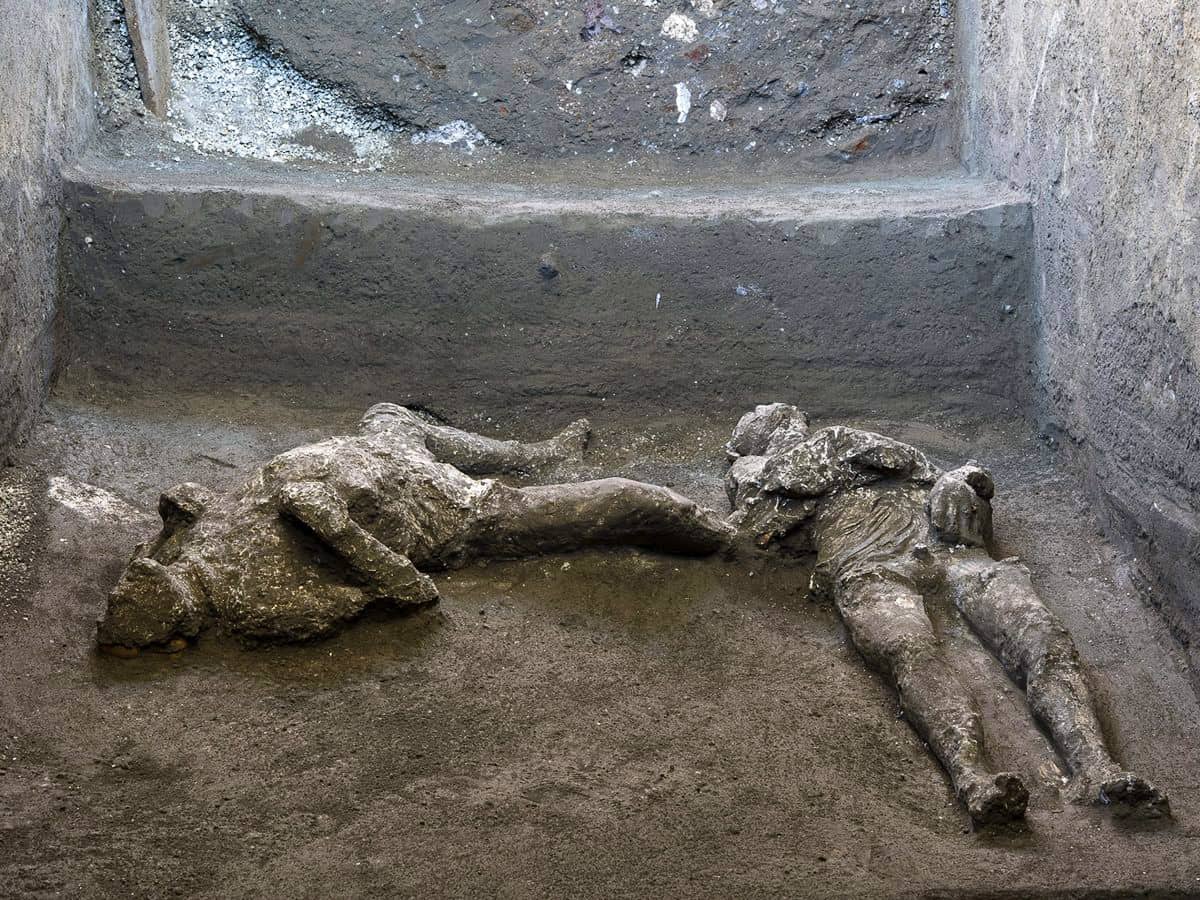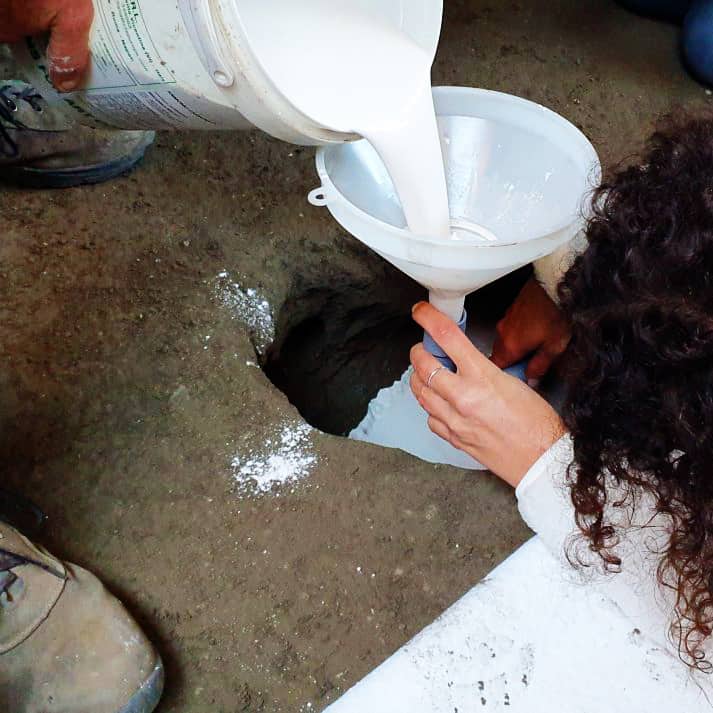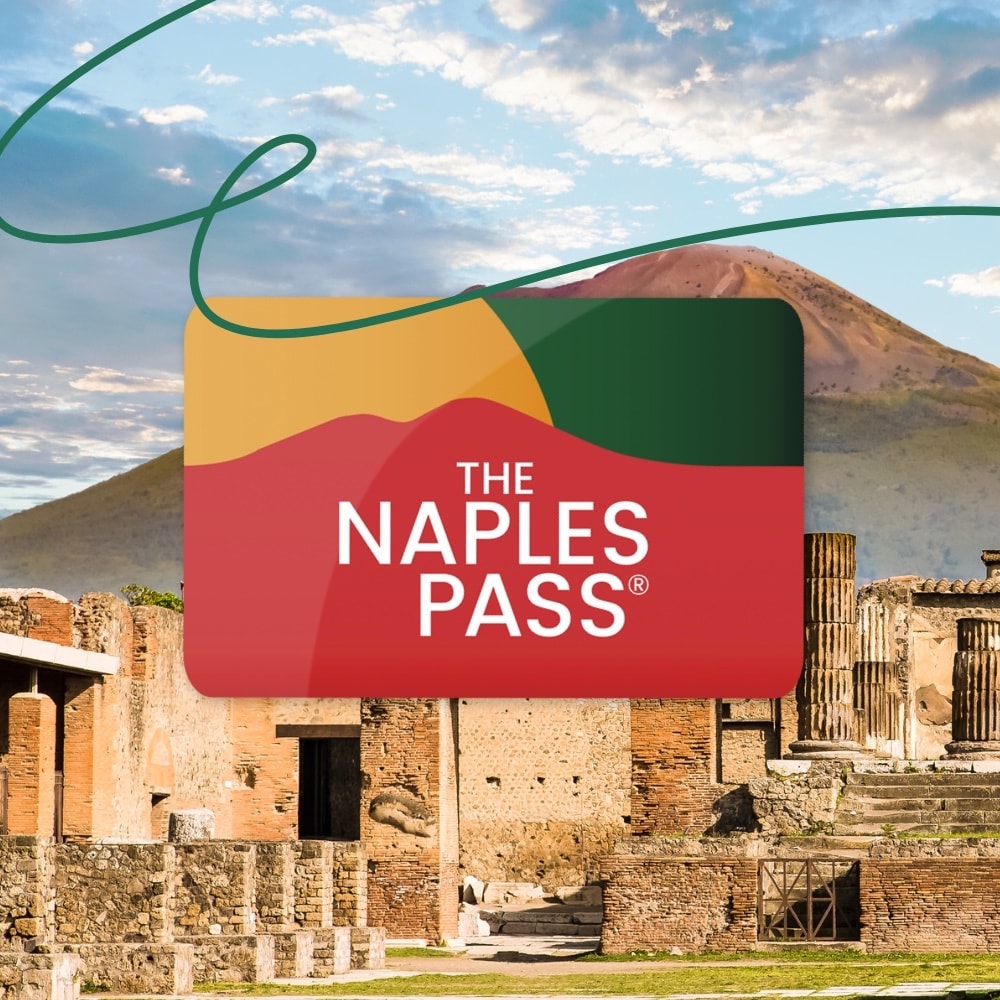The tragic eruption of the Vesuvio in 79 AD destroyed an entire civilization as well as the town of Pompeii. The archeological park, born under the ruins of the city, aims to celebrate and remember the extraordinary event that still today brings back the victims. The latest discovery in November 2020 brought back to light two bodies that were still intact and probably died on the second day of the eruption.

The place and the protagonists of the finding

The site of the discovery was the Civita Giuliana, a rich villa of the Augustine era with salons and terraces facing the sea. In 2017, there were discovered three horses of race, one with the saddle ready for the imminent departure of its master. That villa most likely belonged to the family of the Mummii, a prestigious Roman family of the imperial times.
The two bodies probably dead between 9.00 and 10.00 o'clock on the second day of the Vesuvio eruption in 79 AD, beneath the door of the villa, where they were seeking shelter. We do not know who they were, but we know something from the analysis of their age. There is a young man between the ages of 18 and 23, 1.56 meters high who was a slave because he has crushed vertebrae due to heavy labor. Next to him, his master, a man between 30 and 40 years old, 1.62 meters high, who was protecting himself with a blanket of wool from the lapillus rain.
If the social class divided them the tragic end brought them together.
The technique of chalk casts

The current archeological site, financed entirely by Pompeii Park with EUR 1 million, take place in cooperation between the public prosecutor's office of Torre Annunziata and the Carabinieri to stop the work of the tombaroli.The discovery was made possible by the ancient technique of chalks casts conceived in the second half of the 1980s by Giuseppe Fiorelli: the method involves a liquid gypsum casting in the cavity left by the bodies that have decomposed. When the gypsum has solidified, the surrounding soil is removed to bring the shape to light.
This technique allows capturing perfectly the shapes, the features, the blood vessels that seem to pulsate, and even the draperies of the clothes.
"This extraordinary discovery shows that Pompeii is important in the world not only because of the huge number of tourists - says the minister for cultural goods and activities and tourism, Dario Franceschini - but because it is an incredible place for research, study, and training. More than twenty hectares are still to be studied and dig, a great job for archeologists today and for the future generations too".




